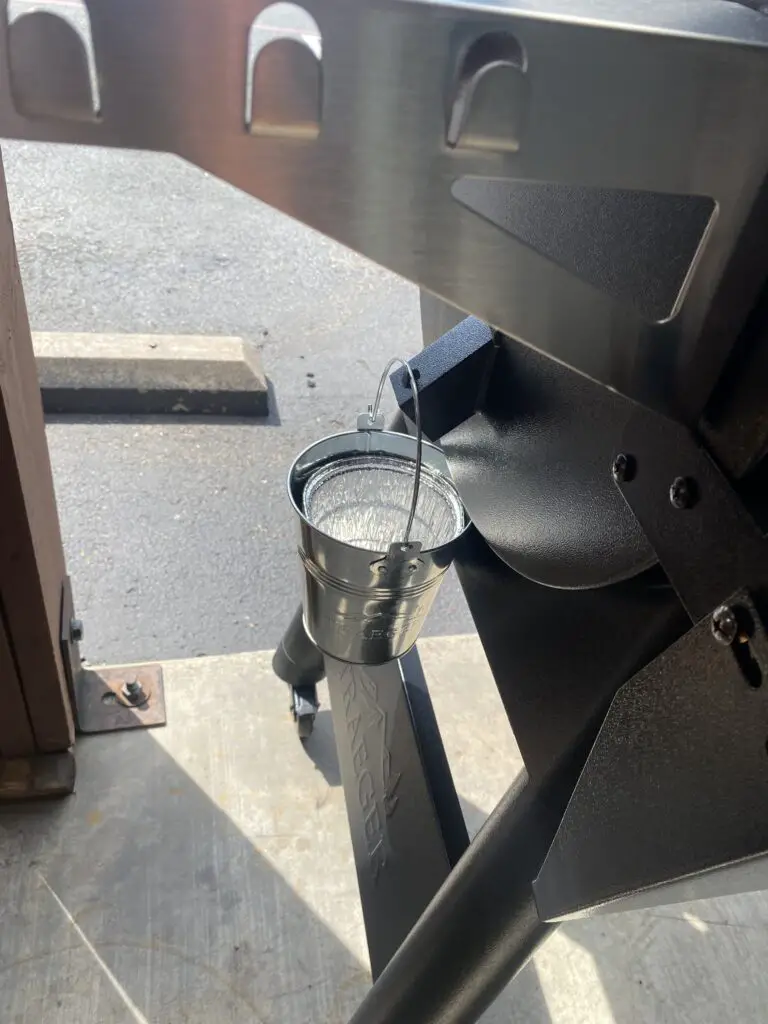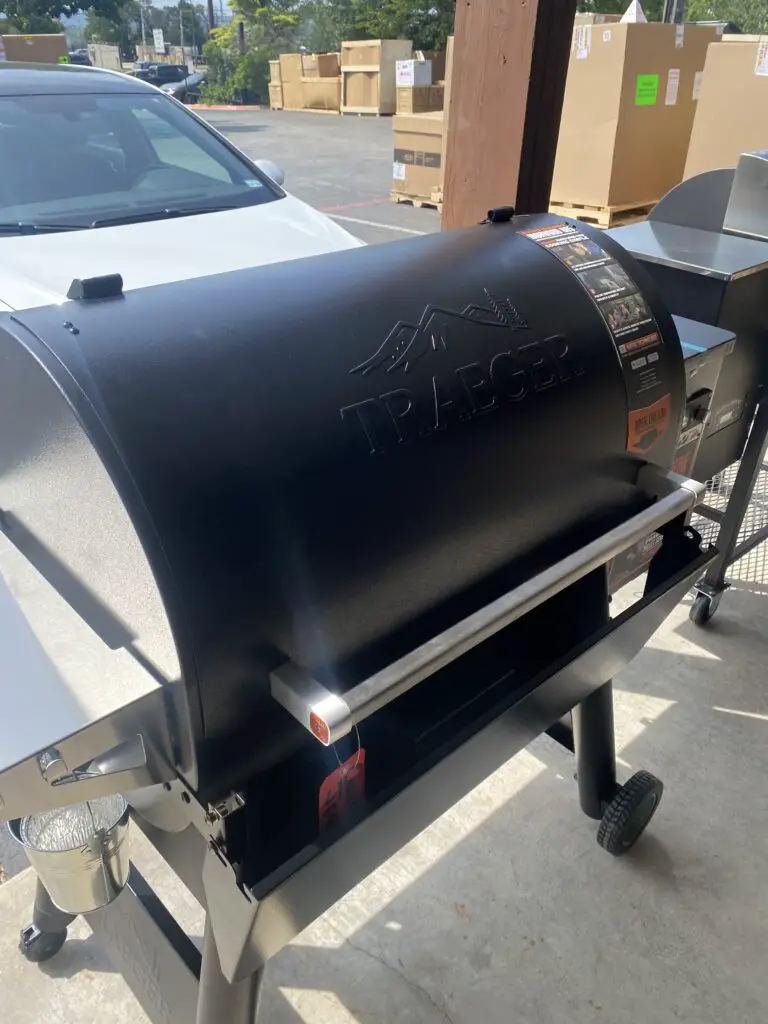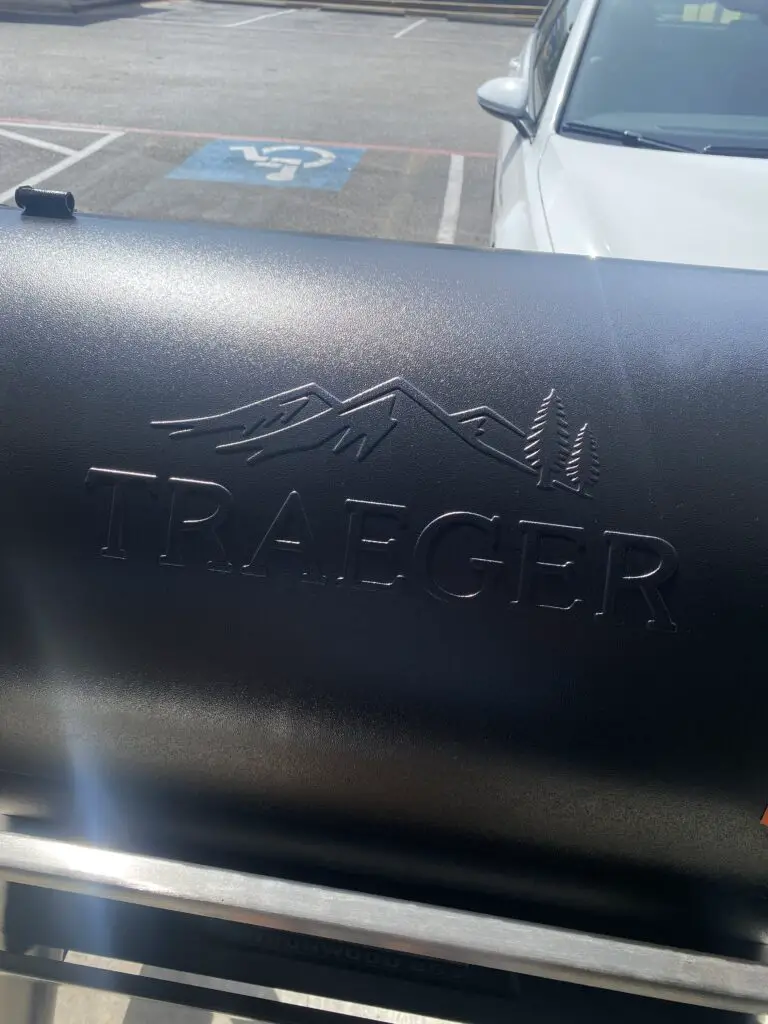We strive to provide you with authoritative, trustworthy, and expert advice. In doing so, the staff at bbqdropout.com performs extensive research, editing, and fact checking to every post on this webiste. If you feel that this article can improve, please feel free to reach us at staff@bbqdropout.com
Before continuing this article, I wanted to let you know that I have a YouTube channel where I showcase all sorts of video content related to BBQ. Subscribing would mean a lot to me, and I very much appreicate all the support!
Traeger Priming The Grease Trap
Priming the grease trap is an important cleaning and setup step for some of Traeger’s newest grills like the WiFire-enabled Timberline and Ironwood.
It is the sort of thing you typically do in the initial setup, as well as after a thorough deep cleaning. It ensures that all grease, rendered fat, excess marinade, and other drippings don’t build up inside the lower part of the grill’s smoking chamber.

If you don’t prime the grease trap the fat in the bottom of the grill can start to gunk up into a carbon polymer.
This sticky tar-like substance can be very hard to clean.
At high enough temperatures it can even start to give off an unpleasant odor in the smoke you are using to cook the food.
Worse still, a Traeger grill without a properly primed grease trap can be at an ever-increasing risk of suffering a serious grease fire.

Priming the grease trap on a Traeger Timberline or Ironwood is relatively easy. All you have to do is remove the racks and the grease plate at the bottom of the primary smoking chamber.
You can then pour warm water or flaxseed oil down the throat of the grease management system.
Flaxseed oil costs a little more, but it is the better option.
Sometimes the WiFire app on the Traeger Timberline and the Traeger Ironwood will send you a reminder to prime the grease trap. Though this is just a setup reminder.
You don’t have to prime the grease trap every single time. Only during initial setup and seasoning or after a complete deep cleaning.
How Do You Clean a Traeger Grease Trap?
Cleaning a Traeger grease trap should only be done after the grill has been allowed to cool down, though not so cold that any grease or rendered fat starts to congeal.
At that point, you can start scraping down your grill grates and releasing any other stuck-on tidbits of food, before removing them.

You can also wipe off any soot or grease spatter on the backside of the lid or near the chimney cap.
This sends debris down to the grease plate and the grease management system, for cleaning.
It also ensures that this particle debris doesn’t drop down onto your food during the next smoking session.
You can then wipe off the grease plate at the bottom of the Traeger Timberline’s primary smoking chamber. It can be hand washed to remove any grease from it.
Then you can pour the grease and rendered fat out of the removable grease collection cup at the bottom of the Traeger’s grease trap system.
If there is any stubborn stuck-on grease or caramelized marinade in the grease collection cup, you can hand wash it in warm soapy water with household dish soap.

Then carefully hand dry the grease trap with clean paper towels and reinstall it.
You can then reinstall the rest of the lower components, including the grease plate, and insert the grill racks back into your Traeger grill.
What Is The Grease Trap on a Traeger?
Newer models of the Traeger Timberline and Ironwood use an internal grease trap system as a repository for grease, rendered fat, and other drippings that fall onto the lower grease plate at the bottom of the smoking chamber.
This grease plate is slightly angled to allow drippings and small pieces of food debris to gradually flow into the grease trap system.

It is all deposited in a lower grease collection trap that you can easily pour out and wash.
This is different from older Traeger models that typically had a grease cup on the outside of the grill, which had a knack for spilling and making a mess.
This new grease trap system is Traeger’s way of answering customer demand for a better grease management system.
What Does Priming a Grease Trap on a Traeger Do?
Priming the grease trap on a Traeger Timberline or Ironwood grill ensures that all grease, and drippings flow efficiently through the built-in grease management system to the grease collection cup.
If you skip the priming stage, excess grease and rendered fat can build up in the bottom of the grill.

Not only can this create an unpleasant smoke from burning polymerization of fats, but it can incrementally increase the risk of a grease fire.
Should You Be Priming Grease Traps on Traeger Grills?
Priming the grease trap on a Traeger grill should be done when you initially set the grill up as part of the breaking-in process.
From there you only really need to prime the Traeger grease trap after giving the wood pellet grill a comprehensive deep cleaning.

Unless you are smoking a lot of fatty meats during the summer, you can usually include priming the grease trap as part of your spring or fall cleaning routine.
If you are a major smoked meat enthusiast, making multiple grease meals per week on your Traeger Timberline or Ironwood, then you might need to clean your Traeger grill every few weeks to perhaps once a month.
This includes cleaning the grease trap and the rest of the grease management system.
In a case like this, you will need to prime the grease trap again to ensure that all grease, rendered fat, and drippings are safely diverted to the grease collector.
Final Thoughts
Newer models like the Traeger Timberline and Traeger Ironwood use an internal grease trap system, rather than the messy grease collection cups you find with older Traeger models.
Though these grease traps systems do need priming with flaxseed oil or warm water in the initial setup. You should also prime the grease management system after every thorough deep cleaning.
This simple process ensures that all grease, and other drippings are safely diverted to the lower grease trap for disposal.
Without proper priming of the grease trap, rendered fat, grease, and other drippings can build up in the bottom of the Traeger’s primary smoking chamber.
In time, it can start to burn, giving off an unpleasant odor in the smoke you are using to cook your food. In a severe case, all that rendered fat can ignite into a dangerous grease fire.
Thankfully, priming the grease trap on a new Traeger grill is relatively easy.
You just need to remove the racks and the grease plate at the bottom of the primary smoking chamber. You can then pour flaxseed oil or warm water down the throat of the grease management system.
All of this information is also included in your Traeger Timberline or Traeger Ironwood’s owner’s manual.
Robert is a certified Pitmaster, with over a decade of experience in smoking the best meats you’ll ever feast upon. He also has a Bachelor of Business Administration from the University of Texas at San Antonio. When he’s not researching technical topics, he’s most likely barbecuing in his backyard.
